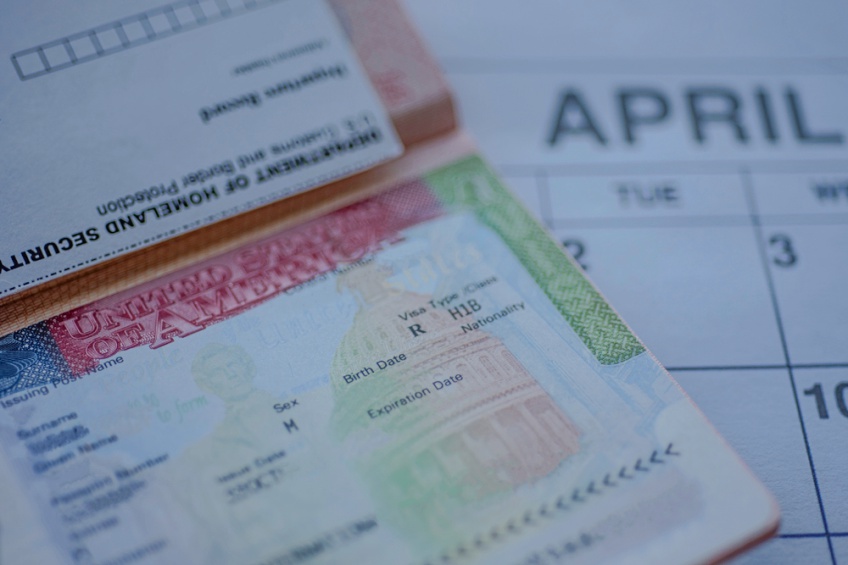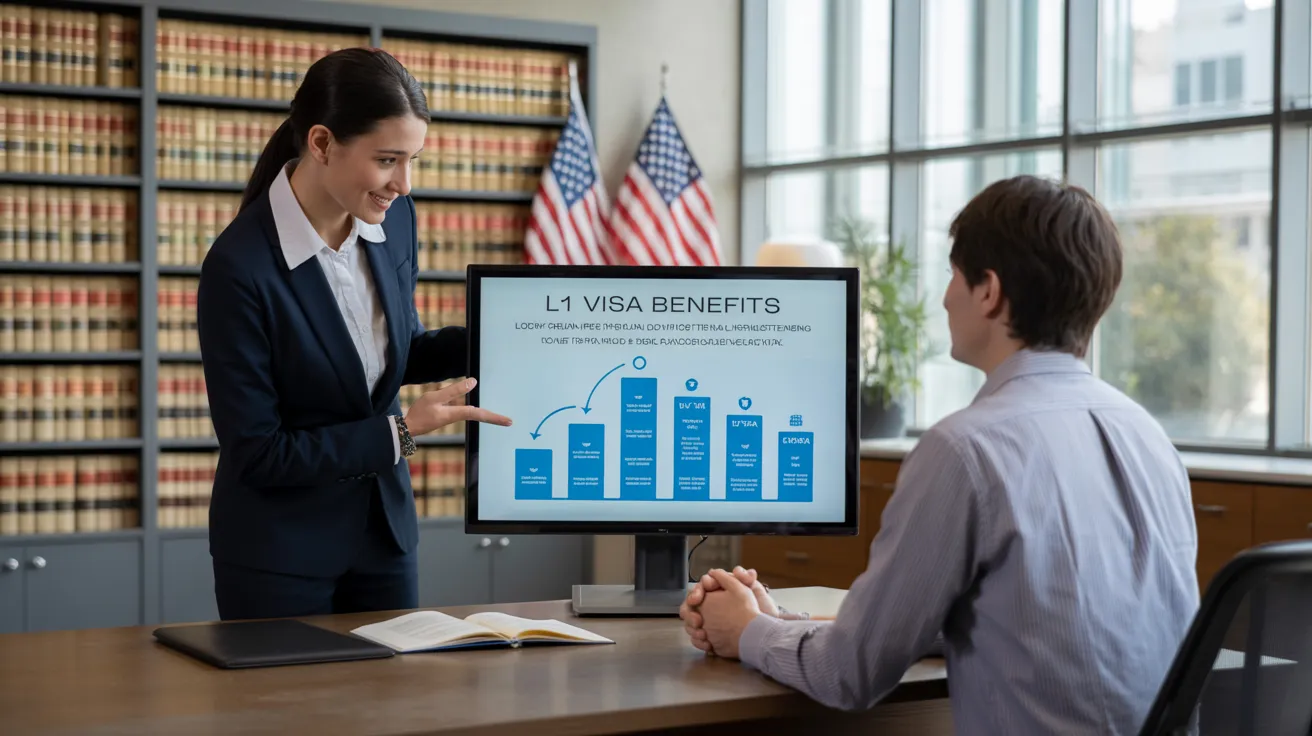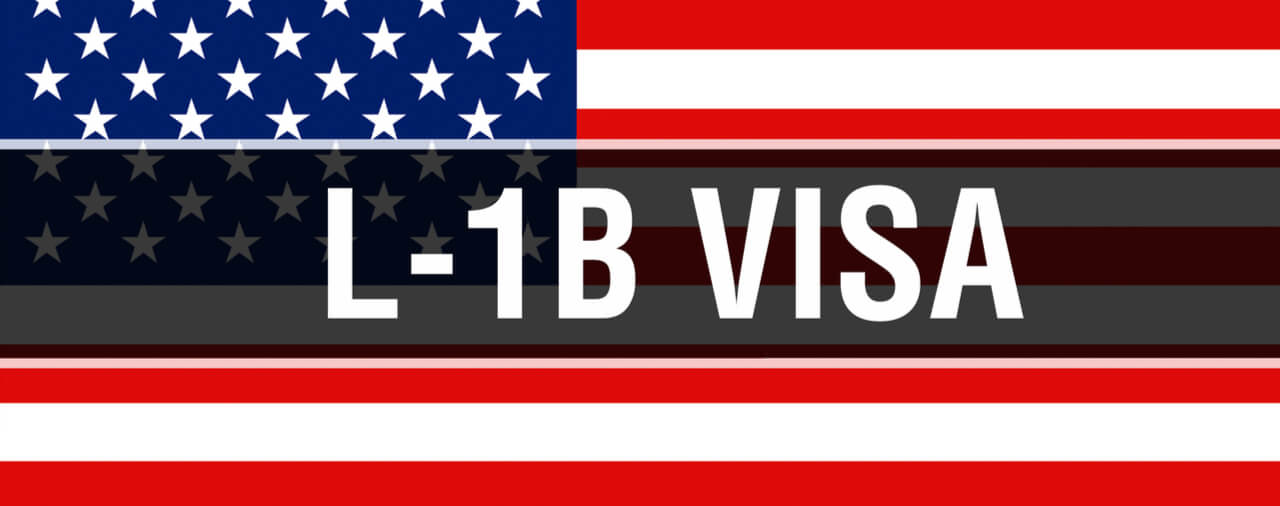Unlocking Opportunities: A Comprehensive Guide to the L1 Visa Process
The L1 visa procedure provides an important path for international companies looking for to move essential employees throughout borders. Understanding the subtleties of qualification criteria, the differences between L-1A and L-1B visas, and the complexities of the application process can considerably affect a candidate's success. Maneuvering this complicated landscape is not without its challenges, and careful attention to documentation and company sponsorship is necessary. As we discover the vital elements of this process, the techniques for conquering prospective challenges will come to be obvious, exposing exactly how informed prep work can open up a world of opportunities.
Comprehending the L1 Visa
Understanding the L1 visa entails recognizing its significance as an essential device for international firms looking for to transfer competent employees between international workplaces. This non-immigrant visa classification helps with the activity of execs, managers, and specialized knowledge workers to the USA, consequently allowing organizations to maintain operational connection and harness worldwide ability efficiently. The L1 visa is separated into 2 key categories: L-1A for supervisors and executives, and L-1B for staff members possessing specialized knowledge.The L1 visa offers a vital role in improving a firm's competitive edge in the worldwide market - L1 Visa. By permitting companies to relocate their crucial workers, businesses can ensure that vital jobs are handled by qualified people who are already accustomed to the company's society and operational procedures. This inner transfer mechanism not just cultivates understanding sharing but also promotes advancement and cooperation throughout borders.Moreover, the L1 visa is often preferred for its fairly straightforward application process contrasted to other visa categories, as it allows for double intent, allowing holders to seek permanent residency while on a temporary job visa. This attribute makes the L1 visa specifically appealing for both companies and staff members, as it simplifies the path for competent specialists to develop lasting residency in the USA
Eligibility Requirements
Qualification for the L1 visa depends upon a number of vital criteria that guarantee both the worker and the employer fulfill details qualifications. This non-immigrant visa is made for multinational companies to transfer employees from consular services to united state counterparts.Firstly, the company has to be a qualifying company, that includes a moms and dad company, branch, associate, or subsidiary of an U.S. business. The company needs to have been doing organization for at the very least one year both in the united state and abroad. This ensures that the firm has enough operational security and a legit presence.Secondly, the worker should hold a supervisory, exec, or specialized knowledge position. For L1A visas, the applicant has to show managerial or executive credentials, while L1B visas concentrate on specialized knowledge related to the organization's products, services, or procedures. Additionally, the worker should have helped the international entity for a minimum of one constant year within the last three years before their application.Lastly, the employee's duty in the U.S. must straighten with their previous placement, making certain that their abilities and expertise are leveraged for the business's benefit.
Sorts Of L1 Visas
The L1 visa classification makes up 2 primary types created to help with the transfer of staff members within international firms: the L1A visa for supervisors and executives, and the L1B visa for staff members with specialized understanding. Each type offers unique objectives and has particular qualification criteria.The L1A visa is tailored for people that hold managerial or executive settings within a company. This visa makes it possible for high-level workers to move to an U.S. branch, subsidiary, or affiliate of the same company. Candidates for the L1A visa must show that they have been utilized in a supervisory or executive capability for at the very least one continuous year within the past 3 years prior to their application. In addition, this visa offers a longer period of stay, at first given for three years, with the opportunity of extensions for as much as 7 years.In comparison, the L1B visa is planned for specialists with specialized knowledge associated to the business's items, solutions, or processes. To qualify, applicants need to confirm that their proficiency is vital to the company which they have worked for at the very least one continual year within the last three years in a role that required this specialized understanding. The L1B visa is initially granted for three years, with extensions available for approximately five years.Both visa types are vital for business seeking to improve their worldwide operations by leveraging proficient workers, thus promoting innovation and efficiency within the united state market.
Application Process
Steering via the L1 copyright procedure includes numerous vital steps that need to be thoroughly complied with to ensure an effective end result. The procedure starts with the united state employer, that must first establish qualification by demonstrating a qualifying connection with the foreign entity and validating that the employee satisfies the certain demands for the L1 visa category being sought.Once eligibility is confirmed, the company launches the process by submitting Form I-129, the Request for a Nonimmigrant Worker, with the U.S. Citizenship and Migration Solutions (USCIS) This kind must be gone along with by a comprehensive description of the work obligations to be performed, the organizational structure of both the U.S. and international entities, and the staff member's credentials. It's crucial to confirm that all details is accurate and full, as omissions or errors can bring about delays or denials.Upon authorization of the I-129 application, the following step involves the worker looking for the L1 visa at a united state consular office or consulate in their home nation. This phase requires the conclusion of Form DS-160, the Online Nonimmigrant copyright, and scheduling a meeting. During the interview, the candidate needs to present proof supporting their certifications and the company's petition.After the visa is approved, the staff member can get in the USA to operate in the designated duty. Overall, cautious prep work and adherence to each action of the application process are important for a successful L1 visa outcome.
Called for Documentation

Important Forms Required
Navigating the L1 Visa process needs cautious focus to the crucial forms and documentation needed for an effective application. The primary kind required is the Kind I-129, Request for a Nonimmigrant Employee, which should be finished and submitted by the united state employer. This form details the information of the employment deal and the certifications of the staff member seeking the L1 Visa.Alongside Kind I-129, the candidate will require to complete Form I-539 if coming with family participants are also applying for visas. Furthermore, the employer must supply proof of the qualifying connection in between the U.S. entity and the foreign entity, commonly necessitating the submission of business records such as write-ups of consolidation or economic statements.Moreover, it is vital to include the L Classification Supplement to Type I-129, which specifies the sort of L Visa being requested-- either L-1A for managers and execs or L-1B for employees with specialized understanding. Ultimately, candidates need to ensure that all types are signed and dated properly, as insufficient entries can result in hold-ups or denials. Appropriately setting up these vital kinds lays the foundation for a smoother L1 copyright procedure.

Supporting Proof Needs
Sustaining paperwork is important for a successful L1 copyright, as it validates the claims made in the petition. Candidates should offer a range of documents to show qualification for the visa, which is classified right into 2 main kinds: evidence of the qualifying relationship between the U.S. and foreign entities and evidence of the applicant's qualifications.To establish the relationship, candidates need to submit paperwork such as corporate organizational charts, monetary statements, and proof of possession. These files confirm that the foreign firm has a certifying relationship with the united state company, whether as a parent firm, subsidiary, branch, or affiliate.For the applicant's qualifications, important papers consist of a comprehensive work letter from the foreign company, laying out the applicant's work title, responsibilities, and duration of employment. Additionally, academic qualifications, such as degrees and diplomas, ought to be offered to confirm the applicant's knowledge in the pertinent area.
Employer Sponsorship Records

Typical Challenges
Navigating the L1 visa procedure presents numerous typical obstacles that applicants should be mindful of. Key concerns typically include rigorous documentation needs, prospective delays in handling times, and the need for stringent lawful compliance. Comprehending these barriers can help applicants much better prepare and mitigate dangers during their copyright journey.
Documents Demands
The L1 copyright procedure often offers considerable difficulties connected to documentation needs. Applicants should supply extensive paperwork to establish eligibility, which can cause complication and potential delays. Trick files include proof of a certifying connection in between the U.S. and foreign employer, proof of the candidate's employment history, and thorough information about the work role in the U.S.One usual challenge is gathering enough proof to demonstrate the nature of the certifying relationship. Business often have a hard time to present clear organizational charts or financial declarations that show the connection between the entities. Additionally, guaranteeing that letters of support from companies properly mirror the applicant's job obligations and qualifications is essential, as obscure summaries can result in denials.Another problem develops from the requirement for thorough work summaries that align with the L1 visa classifications. Candidates must articulate not only their existing role however also their supervisory or specific expertise responsibilities clearly. This requires a comprehensive understanding of both the candidate's position and the regulative language made use of in L1 applications.
Handling Dead Time
Experiencing delays in processing times is a common challenge faced by L1 visa applicants, often leading to aggravation and uncertainty. Several factors add to these hold-ups, consisting of high application quantities, increased scrutiny of applications, and management stockpiles within the U.S. Citizenship and Migration Solutions (USCIS) Applicants may locate that handling times can differ substantially relying on the service center handling their application, as each center has its very own work and efficiency degrees. Furthermore, the complexity of the applicant's case, such as the demand for substantial documents or clarification, can better extend wait times.In some instances, concerns associated to the applicant's present migration standing or previous visa history may additionally bring about additional delays, as USCIS may call for additional evaluation or info. It is necessary for candidates to remain aggressive throughout this period, maintaining open interaction with their employers and legal reps to deal with any type of possible issues promptly.Understanding these processing time obstacles can help L1 visa applicants plan for feasible hold-ups and reduce the influence on their shift and job strategies. Patience and diligence are vital virtues in steering this detailed process.
Lawful Conformity Issues
Many L1 visa applicants encounter legal compliance issues that can complicate their trip toward obtaining the visa. Comprehending and sticking to the details laws set by the U.S. Citizenship and Migration Services (USCIS) is essential. Typical difficulties consist of showing the certifying partnership in between the foreign and U.S. employers, in addition to verifying that the applicant has the requisite specific expertise or managerial capacity.Additionally, candidates have to give comprehensive paperwork describing their task duties, corporate framework, and economic stability of the U.S. entity. Insufficient or inaccurate documentation can cause delays or also denials. Employers must additionally assure that they adhere to labor legislations, including wage and working condition standards, which can influence visa eligibility.Another usual concern entails preserving conformity with the terms of the visa once granted. Adjustments in employment condition, task responsibilities, or business structure can demand changes to the visa, which if not resolved immediately can lead to lawful issues. Consequently, staying educated concerning conformity needs and seeking legal guidance when essential is necessary to browse the complexities of the L1 visa process effectively.
Tips for Success
Success in the L1 copyright procedure often pivots on careful preparation and attention to detail. To improve your chances of authorization, start by thoroughly comprehending the qualification requirements for both the L1A and L1B visa categories. Review whether your setting at the business qualifies as managerial, executive, or specialized understanding, as this classification especially influences your application.Next, collect extensive documentation that corroborates your cases. This includes organizational charts, thorough job summaries, and proof of the business's operational structure. Clear and concise evidence of the qualifying relationship between the united state entity and the foreign entity is essential. Confirm that all documents are organized realistically and presented in a professional manner, as this shows your dedication and seriousness regarding the application.Engage the solutions of an experienced immigration attorney that specializes in L1 visas. Their proficiency can show indispensable, assisting you via complex laws and assuring that all documents complies with current regulations. Additionally, get ready for the meeting by practicing responses to usual inquiries and being ready to review your function and payments to the firm detailed.
Regularly Asked Questions
Can Household Members Come With the L1 Visa Holder?
Yes, member of the family of L1 visa holders, consisting of partners and single children under 21, can go along with the main visa holder. They might additionally make an application for L2 visas, which permit them to reside in the United States.
For How Long Can I Remain On an L1 Visa?
The L1 visa permits initial keeps of as much as 3 years, with the opportunity of extension. L1A visa holders may stay for an optimum of seven years, while L1B visa owners can stay for 5 years.
Can L1 Visa Owners Look For a copyright?
Yes, L1 visa holders can request a permit. L1 Visa. They might seek long-term residency through employment-based classifications, usually calling for sponsorship from their employer, provided they meet the required qualifications and documents needs
What Occurs if My L1 copyright Is Denied?
If your L1 copyright is denied, you might get a L1 Visa notification outlining the factors for rejection. You can look for to appeal the choice, reapply, or discover alternate visa alternatives based on your scenarios.
Exist Any Travel Constraints With an L1 Visa?
An L1 visa usually enables international traveling; nonetheless, re-entry to the U. L1 Visa.S. rests upon keeping valid status. Vacationers ought to guarantee compliance with visa problems to prevent complications upon return
Conclusion
